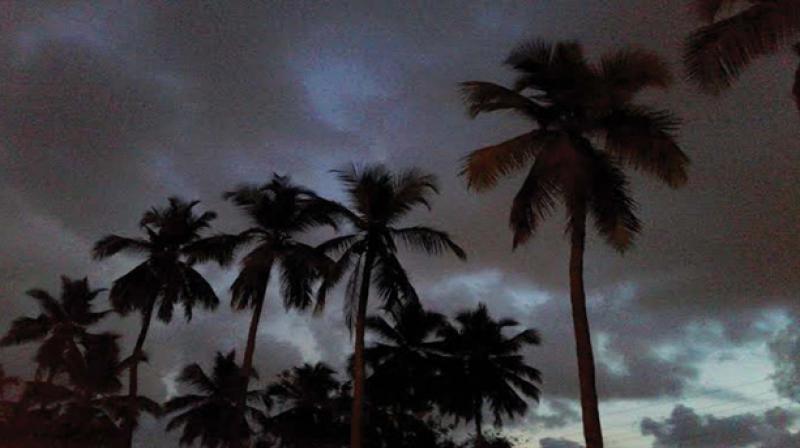Chanakya's View: Celebrating monsoons with raga Malhar, chai & pakoras
Would Chanakya have paused for a moment from his relentless pursuit of politics and political theory.

Would Chanakya have paused for a moment from his relentless pursuit of politics and political theory, when the first raindrops of the monsoon drenched the parched earth, and the irresistible smell of wet earth filled his nostrils? I would think yes, for human beings as talented as he was cannot — and indeed should not — be monochromatic. The change of seasons — from winter to the short-lived spring of north India, to the monsoons, to the clear autumnal nights of October and November, and then the winter again — tug at your heart strings, a curious mix of elation and nostalgia, for one such year that passes by means one year less to witness this great pageantry of nature.
I recall one year when the monsoons were delayed, but later came with a vengeance. I was then a bureaucrat, entombed in one of the rooms of ministry of external affairs in South Block. Suddenly, the light outside my window darkened, and the first big drop hit the pane. I was dictating a note to my private secretary, but I left my work to run to the corridor from where I could see the sky open up in all its splendour. When I returned, my secretary, otherwise a quiet, even reticent man who hardly made conversation, sought my permission to narrate two lines of poet Bihari Lal:
Lage saawan maas bidesh piya
More ang pe boond pare sarsi
Shath kaam ne jor kiyo sajani
Bandh toot gaye chatiya darsi
(The monsoons are here but my beloved is away
A raindrop touches my body suddenly
Cruel Kama wrought his effect O friend
The strings of my garment snapped abruptly)
Frankly, I was left quite stunned. I took my colleague to be someone who was entirely a prisoner of the humdrum routine of office, weighed down with the pedestrian burdens of life, far removed from poetry and the magical seductions of the monsoons. But, here he was, shyly reciting to me the sublime poetry of Bihari, as much — if not more — a participant in joyously welcoming the rains.
After the intense heat of summer, the monsoons in India have always stood for release, relief and romance. So much of our folklore and classical poetry are linked to the rains. Such poetry is not only about the fulfilment of love but also of birha, the pangs of separation if the beloved is away when the skies become grey and the moist winds of saawan blow. If, in the West, a beautiful day has to be sunny, for us a romantic day is when the clouds have hidden the sun, and there is the promise of rain. In fifth century CE, Kalidasa, in his play Meghdoot, immortalised such a cloud by making him the bearer of the exiled Yaksha’s message to his wife, Alaka in the Himalayas.
In more recent times, who can ever erase from memory the song Zindagi bhar nahin bhoolegi ye barsaat ki raat, from the eponymous film Barsaat Ki Raat, where the ethereal Madhubala meets Bharat Bhushan in a rain-filled night? Or, Raj Kapoor and Nargis, singing Pyaar hua ikrar hua, in the 1955 film Shree 420, the rain cascading around them as they come closer to share an umbrella?
Perhaps, for the younger generation, these films are much too old, and there are as many rain-drenched songs from more contemporary films. But these black and white tributes to the romance of the monsoons are, in my view, quite unmatched. The monsoons are also a time for hot cups of tea and garam-garam pakoras and the whiff of bhuttas being roasted on a makeshift fire along the roadside. If it is possible, this is the time to take a short break, and while sipping a cup of tea, listen to the raga Malhar. Every time I listen to Malhar during the monsoons I wonder at the genius of our musical legacy. How can a raga so wonderfully correspond to the mood of the monsoons? As the sky begins to darken, listen first to the slow elaboration of the raga, and reach the fast-paced drut, as it begins to pour. It is quite an unforgettable experience. Or, if you are inclined to poetry, recall the lines of the poet:
Yun barastin hai tasawwur pe purani yaadein
Jaise barsaat mein rimjhin ka sama hota hai
(Like a drizzle in the monsoons
Old memories rain down on me)
There is, alas, the ugly underbelly of the monsoons too. Floods are a recurring experience. People are rendered homeless, crops are destroyed, landslides occur and lives are lost. In cities, roads become rivers, traffic jams last for hours and electrical lines snap. In Bihar, for instance, floods are an annual occurrence, given the silt depositions in the Ganga, and the rivers coming in from Nepal.
The problems created by the monsoons need institutional and enduring responses as urgently as possible. But whatever the downsides, the monsoons are awaited with great anticipation by all Indians, and most of all by the farmer. So, as the skies darken, and a sheet of water surrounds you quenching the thirst of the land, pause for a moment, and salute the miracle of nature.
Chanakya would readily agree that while politics may be a 24x7 preoccupation, there must also be a little time kept aside for poetry and music and a hot cup of tea with pakoras on the side as a humble offering to the Rain Gods.

